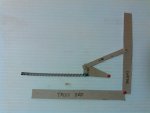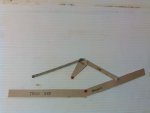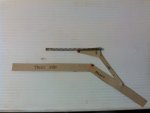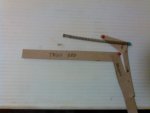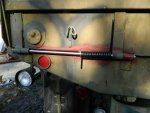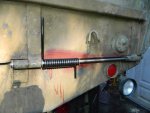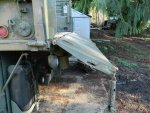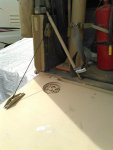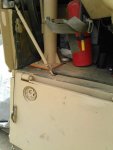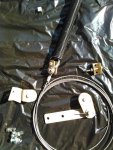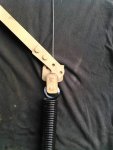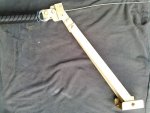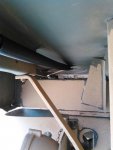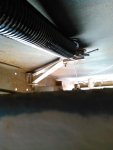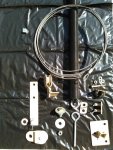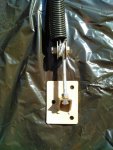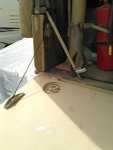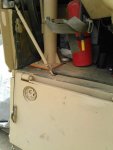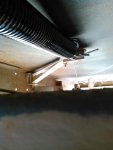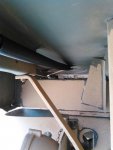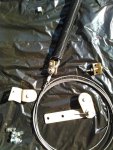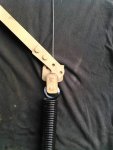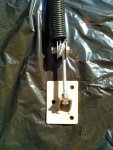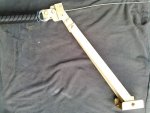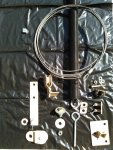A different approach
I thought I'd finally add a writeup with how I decided to solve this problem on my truck. While Rusty's approach works, I was not fond of the way that it failed to allow the tailgate (TG) to go all the way down (180 degrees - instead of the 90 or so that the horse trailer springs he used were designed for), or made it rather "bouncy" if it did. Since I sometimes need to drive my truck with the TG in the down position, I needed a different solution.
What I finally came up with is unfortunately a bit heavier/more complex, but hides most of its components up under the bed floor (all except for one cable and pulley only visible in one rear corner inside the bed, and five 1/4" or 5/16" nuts visible from the outside), is easily disconnectable (e.g.: if dropping the side is needed), can be modified for more/less assist as desired (by swapping springs), and provides its greatest assist when the TG is near horizontal (when I most need it) with the swing-assist diminishing to zero as the TG approaches either vertical position.
This design utilizes a tension-type garage-door spring, a couple of small pulleys, and a wire cable (all available from HD or Lowes); then I had to fabricate a lever-arm, some brackets and connection-links to make it all work (I hope to attach photos of most of the parts before and after mounting to illustrate). Fortunately, none of the parts were difficult to fab - just took a lot of measuring and staring at the underside of the truck to get everything to fit the way I wanted.
Here's how it works: Under the bed, one end of the spring is anchored to the far right of the bracket where the right-rear mud-flap supports are mounted. The moving end of the spring (in the area above and between the frame-rails) is then connected to the cable with a link that also is supported by a lever arm. The lever-arm in the middle (mounted against the inside of the rear-face of the bed) serves two purposes - to support the moving end of the spring (to keep it from bouncing around while driving), and to increase the stretch of the spring (thus its assist) during the part of its travel corresponding to the horizontal portion of the tailgate's arc. From the lever arm link, the cable passes to a pulley in the left rear corner of the bed - which turns it up (through a 1/2" slot I cut in the left rear corner of the floor) to the second pulley (attached to the inside of the rear of the bedside), then to a bracket on the tailgate itself.
With the tailgate at horizontal, I have to hold about 70 pounds of weight without the assist, but only 34 pounds with it (which makes it not much heavier than my 3/4-ton pickup's TG). That was with the lowest-rated (100#) spring I found at the hardware store; they also had 140# rated springs - in case I need more assist later.
I'm fairly happy with how it turned out, and a few other folks I've shown said they liked it as well. It's now been in service for a while (and it hasn't broken in the 3 camping trips and several dozen cycles of the TG so far) - sorry it took so long to post it up, but here it is in case somebody else wants to give it a try or suggest improvements.
Cheers,




